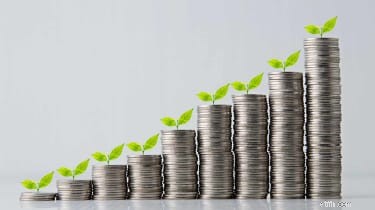
S&P 500-এর লভ্যাংশের স্টকগুলি শেয়ারহোল্ডারদের 2019 সালে 8%-এরও বেশি গড় পে-আউট বুস্ট দিয়েছিল৷ যাইহোক, অনেকগুলি অসামান্য কোম্পানি অনেক বেশি উল্লেখযোগ্য লভ্যাংশ বৃদ্ধির ঘোষণা করেছে – 20%, 30% বা তার বেশি৷ কিছু ক্ষেত্রে, কোম্পানি রাতারাতি তাদের পেআউট দ্বিগুণেরও বেশি।
কোম্পানিগুলি প্রায়ই নতুন বিনিয়োগকারীদের আকৃষ্ট করতে বা শিল্পের প্রতিযোগীদের থেকে আলাদা হতে তাদের নিয়মিত লভ্যাংশে উল্লেখযোগ্য আপগ্রেড অনুমোদন করে। যদিও এককালীন নগদ প্রবাহ প্রায়শই বাইব্যাক বা এককালীন বিশেষ লভ্যাংশের দিকে যায়, যে সংস্থাগুলি বিশ্বাস করে যে তারা লাভের উচ্চতর স্তর বজায় রাখতে পারে তারা বৃহত্তর নিয়মিত পেআউটের মাধ্যমে সেই অর্থের কিছু ফেরত দেবে।
আপনি লক্ষ্য করবেন যে গত বছরের সবচেয়ে বড় লভ্যাংশ বৃদ্ধি ব্যাংকিং শিল্প থেকে এসেছে। এটি আংশিক কারণ কিছু বড় ব্যাংক যারা নগদ মজুদ করে বসেছিল তারা তাদের অতিরিক্ত মূলধন বিনিয়োগকারীদের মধ্যে বিতরণ করার জন্য সরকারী নিয়ন্ত্রকদের কাছ থেকে অনুমতি পেয়েছে। লভ্যাংশ বৃদ্ধির জন্য আরেকটি প্রধান প্রেরণা ছিল কর সংস্কার, যা ব্যাঙ্ক সহ অনেক আমেরিকান কোম্পানির কর-পরবর্তী মুনাফা বৃদ্ধি করে।
এখানে, আমরা 30টি কোম্পানীর দিকে তাকাই যেগুলি বিগত বছরে তাদের আউটসাইজ ডিভিডেন্ড বৃদ্ধির কারণে আলাদা ছিল৷ এখানে তালিকাভুক্ত প্রতিটি লভ্যাংশ বৃদ্ধির স্টক 2019 সালে তার নিয়মিত পে-আউটকে কমপক্ষে 20% উন্নত করেছে, যদিও অনেক ক্ষেত্রে, লভ্যাংশ যথেষ্ট বেশি উন্নত হয়েছে। চলুন দেখে নেওয়া যাক।

কম খরচে তহবিলের জন্য প্রস্তুত অ্যাক্সেসের জন্য ধন্যবাদ, ব্যাঙ্ক অফ আমেরিকা কম নিয়ন্ত্রক মূলধন ব্যবহার করে গত কয়েক বছরে তার উপার্জনের সম্পদকে দ্বিগুণ অঙ্কে বাড়িয়ে তুলতে সক্ষম হয়েছে৷
ব্যাংকটি একটি শালীন চতুর্থ ত্রৈমাসিকের সাথে 2019 শেষ করেছে যেখানে শেয়ার প্রতি নেট আয় প্রায় 6% থেকে 70 সেন্ট বেড়েছে। এটি মোট $2.43 ট্রিলিয়ন সম্পদ এবং $1.43 ট্রিলিয়ন আমানত সহ বছরের শেষ হয়েছে৷
ব্যাঙ্ক অফ আমেরিকার সাম্প্রতিকতম লভ্যাংশ বৃদ্ধির ঘোষণা করা হয়েছিল জুলাই মাসে" একটি 20% উন্নতি একটি নতুন ত্রৈমাসিক হারে 18 সেন্ট প্রতি শেয়ার৷ নগদ বিতরণ গত পাঁচ বছরে 260% দ্বারা বিস্ফোরিত হয়েছে, কিন্তু এটি একটি নিম্ন অবস্থান থেকে উঠে এসেছে৷ BofA এর লভ্যাংশ 2008 সালে 64 সেন্ট থেকে 2009 সালে এক পয়সায় সঙ্কুচিত হয় এবং কোম্পানিটি শুধুমাত্র 2014 সালে তার লভ্যাংশ বৃদ্ধি পুনরায় শুরু করে, যখন এটি শেয়ার প্রতি 5 সেন্টে উন্নীত হয়।
24% (অর্থাৎ, BofA-এর লাভের 24% লভ্যাংশ প্রদানের দিকে যায়) একটি নগণ্য পেআউট অনুপাত একটি বিস্তৃত নিরাপত্তা এবং ভবিষ্যতের লভ্যাংশ বৃদ্ধির জন্য প্রচুর জায়গা রেখে যায়৷

ব্যাঙ্কটি তার প্রযুক্তি আপগ্রেড করার সময় উত্তর ক্যারোলিনার সবচেয়ে জনবহুল বাজারে, যার মধ্যে রয়েছে অ্যাশেভিল, উইনস্টন-সালেম, গ্রিনসবোরো, রালে এবং শার্লট এর পদচিহ্ন প্রসারিত করার পরিকল্পনা রয়েছে৷ গত বছর, ফার্স্ট ব্যানকর্প নতুন বিল পে সিস্টেম, মর্টগেজ-চালিত লোন অ্যাপস এবং কল সেন্টার চালু করেছে। 2020 সালে, ব্যাঙ্ক নতুন ক্রেডিট কার্ড ঋণ এবং খুচরা ব্যাঙ্কিং প্ল্যাটফর্ম চালু করার পরিকল্পনা করছে।
তার ক্যারোলিনা মেট্রো বাজারের শক্তি প্রতিফলিত করে, ফার্স্ট ব্যানকর্প গত অর্ধ-দশকে প্রায় 34% বার্ষিক আয় বৃদ্ধি করেছে এবং এটি ধারাবাহিকভাবে 2015 সাল থেকে প্রতি ত্রৈমাসিকে বিশ্লেষক ঐক্যমত্য EPS অনুমানকে হার মানিয়েছে।
ফার্স্ট ব্যানকর্প 2019 সালে দুটি লভ্যাংশ বাড়ানোর ঘোষণা দিয়েছে – যদিও শুধুমাত্র একটি, শেয়ার প্রতি 20% বৃদ্ধি 12 সেন্ট, গত বছর কার্যকর হয়েছে। ডিসেম্বরের শেষে করা দ্বিতীয় ঘোষণাটি ছিল শেয়ার প্রতি 18 সেন্ট বা 50% বৃদ্ধিতে অনেক বেশি উল্লেখযোগ্য বৃদ্ধি। এটি অবশ্যই 2020 এর বৃহত্তম লভ্যাংশ বৃদ্ধির মধ্যে স্থান পাবে। BofA-এর মতো, একটি নগণ্য পে-আউট অনুপাত (23%) কোম্পানিকে তার পে-আউটগুলি বাড়ানোর জন্য যথেষ্ট জায়গা দেয়৷

সামরিক জাহাজ নির্মাতা হান্টিংটন ইঙ্গলস ইন্ডাস্ট্রিজ (HII, $277.81) বিশ্লেষণাত্মক এবং অপারেশনাল সহায়তা পরিষেবার জন্য সেপ্টেম্বরে প্রতিরক্ষা গোয়েন্দা সংস্থা কর্তৃক বিশাল চুক্তি প্রদান করা 16টি কোম্পানির মধ্যে একটি। বহু বছরের চুক্তির একটি পাঁচ বছরের বেস পিরিয়ড এবং সম্ভাব্য মূল্য $17 বিলিয়ন।
এই খবরটি স্টকটিতে স্বল্পমেয়াদী আশাবাদের জন্ম দিয়েছে এবং গত বছর কোম্পানির 32% বাজার-বীট লাভের বেশ কয়েকটি চালকের মধ্যে একটি ছিল৷
হান্টিংটন ইঙ্গলস যখন তার নিউপোর্ট নিউজ শিপ-বিল্ডিং ইয়ার্ডে অধিগ্রহণ এবং উচ্চতর উৎপাদনের পরিমাণের কারণে 7% রাজস্ব বৃদ্ধি সহ তার সেপ্টেম্বর ত্রৈমাসিকে রিপোর্ট করে তখন আরও ভাল খবর দেয়। সেপ্টেম্বরের শেষে চুক্তির ব্যাকলগ ছিল $39.2 বিলিয়ন, যা 2018 সালের শেষের তুলনায় 70% বেশি। HII $250 মিলিয়ন বিনামূল্যে নগদ প্রবাহ তৈরি করেছে, যার $103 মিলিয়ন শেয়ারহোল্ডারদের লভ্যাংশ এবং শেয়ার পুনঃক্রয়ের মাধ্যমে বিতরণ করা হয়েছে। প্রধানত অ্যাকাউন্টিং সামঞ্জস্য এবং উচ্চ পেনশন খরচের কারণে শেয়ার প্রতি আয় 29% হ্রাস পেয়েছে, তবে এর লাভ এখনও ঐকমত্য বিশ্লেষকের অনুমানের চেয়ে বেশি ছিল।
এই ফলাফলগুলি রিপোর্ট করার কয়েকদিন আগে, হান্টিংটন ইঙ্গলস শেয়ার প্রতি $1.03 এর পে-আউটে 20% বাম্প ঘোষণা করেছে। এটি তার শেয়ার পুনঃক্রয় কর্মসূচিতে $1 বিলিয়ন বৃদ্ধির ঘোষণাও করেছে এবং সেই পরিকল্পনার সময়সীমা 31 অক্টোবর, 2022 থেকে 31 অক্টোবর, 2024 পর্যন্ত বাড়িয়েছে৷
কোম্পানির পে-আউট অনুপাত একটি বিচক্ষণ 24%, এবং এটি একটি উদার লভ্যাংশ বৃদ্ধির স্টক, গত অর্ধ-দশক ধরে বার্ষিক গড় 39% বৃদ্ধি পায়।
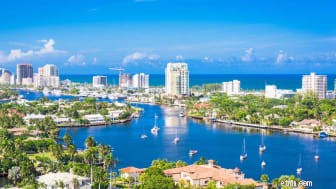
একত্রীকরণ ফ্লোরিডার দ্রুত বর্ধনশীল এলাকায় সাইনোভাসের উপস্থিতি প্রসারিত করেছে যা এখন তার ভোটাধিকারের এক-তৃতীয়াংশ প্রতিনিধিত্ব করে। এছাড়াও, কোম্পানিটি তার সম্পদ ব্যবস্থাপনা এবং ব্রোকারেজ ক্ষমতা প্রসারিত করেছে, নতুন ক্রস-সেলিং সুযোগ অর্জন করেছে এবং একটি বিস্তৃত পদচিহ্ন জুড়ে তার প্রযুক্তি বিনিয়োগের সুবিধা করেছে৷
Synovus গত পাঁচ বছরে 22% বার্ষিক ইপিএস প্রবৃদ্ধি করেছে এবং নিয়মিতভাবে আঞ্চলিক সমকক্ষদেরকে নেট সুদের মার্জিন (NIM), রিটার্ন অন অ্যাসেট (ROA) এবং রিটার্ন অন ইক্যুইটি (ROE) এর মতো লাভ মেট্রিক্সে ছাড়িয়ে যাচ্ছে।
এর শক্তিশালী আর্থিক প্রবৃদ্ধি শেয়ারহোল্ডারদের কাছে ত্রৈমাসিক লভ্যাংশের আকারে পুনঃবন্টন করা হয়েছে যা বার্ষিক 24% এরও বেশি বৃদ্ধি পেয়েছে। এর মধ্যে রয়েছে 20% বৃদ্ধির ঘোষণা যা 2019 সালের জানুয়ারী মাসের মাঝামাঝি। পেআউট অনুপাত 34% বৃদ্ধির নমনীয়তার সাথে একটি নিরাপদ লভ্যাংশ বোঝায়।

ইউনাইটেড হেলথ পূর্বাভাসযোগ্যতার একটি বিস্ময়কর, গত এক দশকে 11% বিক্রয় বৃদ্ধি এবং প্রায় 14% ইপিএস বৃদ্ধি প্রদান করেছে। এতে শীর্ষ লাইনে 7% উন্নতি এবং 2019 সালে নীচের লাইনে 17% বৃদ্ধি অন্তর্ভুক্ত ছিল। ফলাফল:সারা বছর জুড়ে ক্রিয়াকলাপ থেকে $18.5 বিলিয়ন নগদ প্রবাহ। এবং শক্তিশালী পুনরাবৃত্ত রাজস্বের জন্য ধন্যবাদ, UNH-এর উচ্চ আয়ের দৃশ্যমানতা রয়েছে। এটি 2020 সালে উচ্চ-সিঙ্গেল-ডিজিটের বিক্রয় এবং লাভ বৃদ্ধির জন্য নির্দেশিকা।
ইউনাইটেড হেলথ টানা তিন বছর ধরে তার লভ্যাংশ 20% বাড়িয়েছে, এবং পেআউট 2010 সাল থেকে বার্ষিক বৃদ্ধি পাচ্ছে।

কোম্পানিটি তার মূল ক্রেডিট, ডেবিট এবং প্রি-পেইড কার্ড পণ্যগুলিতে 17 ট্রিলিয়ন ভোক্তা খরচ এবং $15 বিলিয়ন থেকে $20 বিলিয়ন বিজনেস-টু-বিজনেস (B2B) খরচ এখনও নগদ এবং চেকের মাধ্যমে বৃদ্ধির সুযোগ দেখতে পায়। ভিসা B2B, ব্যক্তি-থেকে-ব্যক্তি (P2P), ব্যবসা-থেকে-ভোক্তা (B2C) এবং সরকার-থেকে-ভোক্তা (G2C) অর্থপ্রদানের জন্য নতুন পণ্যগুলির সাথে ডিজিটাল অর্থপ্রদানে তার স্থানান্তর ত্বরান্বিত করার পরিকল্পনা করেছে।
ভিসার রাজস্ব 2019 অর্থবছরে 11% বৃদ্ধি পেয়েছে, যা EPS-তে 20% বৃদ্ধির কারণ। এটি নতুন ক্লায়েন্ট অংশীদারিত্ব, জৈব বিনিয়োগ এবং অধিগ্রহণের ফলে এসেছে। সাম্প্রতিক M&A কার্যকলাপে একটি ক্রস-বর্ডার পেমেন্ট প্রসেসর (আর্থপোর্ট) এবং একটি পয়েন্ট-অফ-সেল পেমেন্ট সফটওয়্যার ডেভেলপার (পেওয়ার্ক) অন্তর্ভুক্ত রয়েছে। ভিসা কম দ্বি-সংখ্যার 2020 আয় বৃদ্ধি এবং মধ্য-কিশোর ইপিএস বৃদ্ধির জন্য নির্দেশিকা।
লভ্যাংশ বৃদ্ধির স্টকগুলির মধ্যে ভিসা একটি খ্যাতি অর্জন করছে। 2019 সালে এর 20% লভ্যাংশ বৃদ্ধি তার পাঁচ বছরের গড় অনুসারে এবং কোম্পানির টানা 11 তম উন্নতি চিহ্নিত করেছে। 19% এর একটি মাঝারি পেআউট অনুপাত কোম্পানিকে প্যাডেল নিচে রাখতে সক্ষম করবে৷

শক্তিশালী ঋণ বৃদ্ধি সত্ত্বেও, 245 বিলিয়ন ডলারের কৃষি ঋণের বাজার সম্প্রসারিত হওয়ার মাত্র 6% শেয়ার ফারমার ম্যাকের। বিশ্বব্যাপী খাদ্য চাহিদা বৃদ্ধির ফলে বাজারের উল্লেখযোগ্য বৃদ্ধি প্রত্যাশিত; বিশ্বের ক্রমবর্ধমান জনসংখ্যাকে খাওয়ানোর জন্য, আমেরিকান খামারের উত্পাদনশীলতা আগামী 30 বছরে দ্বিগুণ হতে হবে। ফার্মার ম্যাক তার কম খরচের তহবিল - একটি প্রধান প্রতিযোগিতামূলক সুবিধা - বাজারের অংশীদারিত্ব লাভ করার পরিকল্পনা করেছে৷
ফার্মার ম্যাকের লাভের বৃদ্ধি এই তালিকার আগের কোম্পানিগুলির তুলনায় অনেক বেশি পরিমিত হয়েছে, বার্ষিক প্রায় 7.5%। তারপরও, এটি গত অর্ধ-দশক ধরে বার্ষিক প্রায় 38% শক্তিশালী লভ্যাংশ বৃদ্ধি বহন করতে সক্ষম হয়েছে; গত বছরের বৃদ্ধি 21% এ এসেছে। তা সত্ত্বেও, AGM শেয়ারগুলি কোম্পানির লাভের মাত্র 34% এর একটি পরিমিত পেআউট অনুপাত নিয়ে গর্ব করে৷

বিশ্বের বৃহত্তম বিনিয়োগ ব্যবস্থাপনা সংস্থাগুলির মধ্যে একটি, ব্ল্যাকরক (বিএলকে)-তেও PNC একটি সংখ্যালঘু অংশের মালিক৷
যদিও 2019 কোম্পানির জন্য একটি অপেক্ষাকৃত ধীর বছর ছিল। রাজস্ব মাত্র 4% উন্নত হয়েছে, যেখানে নেট আয় মাত্র 1.3% বেশি হয়েছে। কোম্পানির চতুর্থ-ত্রৈমাসিক আয় শীর্ষ অনুমানে পরিচালিত হয়েছে, যদিও ওয়াল স্ট্রিট খরচ বৃদ্ধির বিষয়ে উদ্বেগের কারণে শেয়ারের দাম কমিয়েছে। এখনও, PNC সম্পদে 3.5% বার্ষিক বৃদ্ধি, 5% বার্ষিক EPS বৃদ্ধি এবং শেয়ার প্রতি বুক ভ্যালুতে প্রায় 6% লাভ ডেলিভারি করেছে।
কিন্তু কোম্পানিটি শেয়ারহোল্ডারদের কাছে তার সম্পদের ক্রমবর্ধমান পরিমাণ ভাগ করে নিচ্ছে। PNC তার শেয়ার-বাইব্যাক প্ল্যানে $1 বিলিয়ন বৃদ্ধির ঘোষণা করেছে, Q2 2020 এর শেষ পর্যন্ত। এটি জুলাই মাসে 21% ডিভিডেন্ড বৃদ্ধির ঘোষণা করেছে $1.15 শেয়ার প্রতি - এর 19% পাঁচ বছরের বার্ষিক গড় থেকে একটু বেশি।

অধিকন্তু, ইউএনপি প্রাথমিকভাবে কৃষি, জ্বালানি এবং উত্পাদন শিল্পের সাথে জড়িত 10,000 এরও বেশি গ্রাহকদের জন্য রেল মালবাহী পরিষেবা সরবরাহ করে৷
চীনের সাথে বাণিজ্য যুদ্ধ কোম্পানির সেপ্টেম্বর ত্রৈমাসিকের ফলাফলকে নেতিবাচকভাবে প্রভাবিত করেছে, যার ফলে মালবাহী পরিমাণে বছরে 7% হ্রাস পেয়েছে। এটি বলেছে, ত্রৈমাসিকে অপারেটিং দক্ষতা এবং $1.1 বিলিয়ন মূল্যের শেয়ার পুনঃক্রয়ের জন্য EPS এখনও 3% দ্বারা উন্নত হয়েছে৷ ইউনিয়ন প্যাসিফিক ডিসেম্বর ত্রৈমাসিকে 10% ভলিউম হ্রাসের জন্য গাইড করেছে, তবে, যা বিশ্লেষকদের সম্মতি 2019 ইপিএস অনুমান কমিয়ে দিয়েছে। (কোম্পানির Q4 ফলাফল 23 জানুয়ারী প্রকাশিত হবে।)
সাম্প্রতিক বাণিজ্য যুদ্ধের সমস্যাগুলি অন্যথায় একটি চমৎকার অতীত পারফরম্যান্সকে বাধাগ্রস্ত করেছে যার ফলে গত দশকে ইউনিয়ন প্যাসিফিক 14% বার্ষিক ইপিএস লাভ করেছে৷
কোম্পানিটি একটি ধারাবাহিক লভ্যাংশ বৃদ্ধির স্টক হয়েছে; গত পাঁচ বছরে 14% বার্ষিক ক্লিপ সহ এটির পেআউটগুলি টানা 13 বছর ধরে উন্নত হয়েছে। UNP 2019 সালে এক জোড়া বাড়ানোর প্রস্তাব দিয়েছে – প্রথমে শেয়ার প্রতি 80 সেন্ট থেকে মার্চ মাসে 88 সেন্টে, তারপর আবার সেপ্টেম্বরে 97 সেন্টে, যা মোট প্রায় 21% লাফের জন্য ভাল ছিল।

কোম্পানিটি সেপ্টেম্বর ত্রৈমাসিকে একটি দুর্দান্ত পারফরম্যান্স প্রদান করেছে, যার বিক্রয় বছরে 8% বৃদ্ধি পেয়েছে, এটি বিক্রয় বৃদ্ধির টানা 26 তম ত্রৈমাসিক। ক্রমাগত অপারেশন থেকে EPS রকেট হয়েছে 52%। কার্লাইল তার নির্মাণ সামগ্রীর ব্যবসায় মূল্য বৃদ্ধি, খরচ সঞ্চয় এবং অধিগ্রহণ থেকে উপকৃত হয়েছে এবং তার আন্তঃসংযোগ প্রযুক্তি বিভাগে একটি অনুকূল বিক্রয় মিশ্রণ।
এই নির্ভরযোগ্য পারফর্মার গত পাঁচ বছরে 9% বার্ষিক বিক্রয় বৃদ্ধি এবং 10% বার্ষিক ইপিএস লাভ ডেলিভার করেছে। Carlisle একটি দর্শনীয় লভ্যাংশ বৃদ্ধি স্টক, এছাড়াও, 42 টানা বার্ষিক বৃদ্ধি গর্বিত. গত আগস্টে, এটি তার পেআউটকে 25% বৃদ্ধি করে, প্রতি শেয়ার 50 সেন্টে।

2014 সাল থেকে, ফার্স্ট চয়েস 22% বার্ষিক ঋণ বৃদ্ধি এবং 21% আমানত বৃদ্ধি পেয়েছে। প্রতিদ্বন্দ্বী Pacific Commerce Bancorp-কে অধিগ্রহণ করার সময় 2018 সালে সম্পদের পরিমাণ 60% বৃদ্ধি পেয়েছে। একীভূতকরণ FCBP-কে বর্ধিত স্কেলের মাধ্যমে দক্ষতা উন্নত করতে সক্ষম করেছে। এর শেয়ার প্রতি লাভ গত তিন বছরে বার্ষিক 28% বৃদ্ধি পেয়েছে, যার মধ্যে সেপ্টেম্বর ত্রৈমাসিকে 17% উন্নতি হয়েছে৷
প্রথম পছন্দের নিকট-মেয়াদী অগ্রাধিকারগুলি দক্ষিণ ক্যালিফোর্নিয়ার বাজারে এর উপস্থিতি আরও গভীর করছে এবং লভ্যাংশ এবং শেয়ার পুনঃক্রয়ের মাধ্যমে শেয়ারহোল্ডারদের কাছে নগদ ফেরত দিচ্ছে৷ এটি নভেম্বরে সেই শেষ লক্ষ্যের দিকে কাজ করেছিল, শেয়ার প্রতি 25 সেন্টে 25% লভ্যাংশ বৃদ্ধির ঘোষণা করেছিল – চার বছরে এটির প্রথম পেআউট বৃদ্ধি৷

কোম্পানিটি 2013 সালে $4.9 মিলিয়ন লোকসান থেকে 2019 সালে $37.3 মিলিয়ন লাভে পরিণত হয়েছে, প্রিমিয়াম লিকারের উপর MGP-এর ফোকাস, স্পিরিট মার্কেটে হুইস্কির ক্রমবর্ধমান শেয়ার এবং একটি ভাল পণ্যের মিশ্রণ থেকে মার্জিন লাভের জন্য ধন্যবাদ৷ কোম্পানির প্রিমিয়াম অ্যালকোহলযুক্ত পানীয়ের বিক্রয় চার বছর আগের সামগ্রিক বিক্রয়ের 57% থেকে আজ 70% বেড়েছে৷
পাতিত স্পিরিট ছাড়াও, MGP মাংসের বিকল্প পণ্যে ব্যবহৃত বিশেষ গমের প্রোটিন এবং স্টার্চ সরবরাহ করে এবং এই বাজারে 2020 সালে $5.2 বিলিয়ন বৃদ্ধির সুবিধার জন্য ভাল অবস্থানে রয়েছে।
এতে বলা হয়েছে, ওয়াল স্ট্রিটের প্রত্যাশার তুলনায় 2019 সালের পূর্ণ-বছরের যথেষ্ট দুর্বল ফলাফল ঘোষণা করার পরে কোম্পানির শেয়ার সম্প্রতি এক দিনে প্রায় 28% কমে গেছে। সিইও গাস গ্রিফিন বলেছেন যে অপ্রতুল নির্দেশিকা ছিল "আমরা চতুর্থ ত্রৈমাসিকে যে বয়সী হুইস্কি বিক্রির পূর্বাভাস দিয়েছিলাম তার একটি বড় অংশ লেনদেন করতে শেষ পর্যন্ত ব্যর্থ হয়েছি," ইঙ্গিত করে যে সমস্যাটি চাহিদা ছিল না, তবে এমজিপির সম্পাদন এবং ক্যাপচার করার ক্ষমতা সেই চাহিদা।
লভ্যাংশের জন্য:MGP প্রকৃতপক্ষে 2018 সালে তার ত্রৈমাসিক পেআউট দ্বিগুণ করে, শেয়ার প্রতি 4 সেন্ট থেকে শেয়ার প্রতি 8 সেন্টে, তারপর 2019 সালে 25% বৃদ্ধির সাথে একটি ডাইম পর্যন্ত। এর পেআউট অনুপাত 17% ভবিষ্যতের লভ্যাংশ বৃদ্ধির জন্য প্রচুর রানওয়ে প্রদান করে৷

আইটি বাজার কতটা ভঙ্গুর তার একটি সাক্ষ্য:মার্কেট লিডার হওয়া সত্ত্বেও, CDW $325 বিলিয়ন সুযোগের মাত্র 5% ধারণ করে। প্রবৃদ্ধি আসবে নতুন গ্রাহক যোগ করা, উচ্চ-বৃদ্ধির সমাধানের ক্ষেত্রে সক্ষমতা বৃদ্ধি করা এবং পরিষেবার অফারগুলি সম্প্রসারিত করা।
2019-এর প্রথম নয় মাসে CDW-এর বিক্রয় 11% বেড়েছে, যা শেয়ার প্রতি সামঞ্জস্যপূর্ণ আয়ের 13% উন্নতির কারণ হয়েছে। কোম্পানিটি পুরো বছরের জন্য মধ্য-কিশোর ইপিএস লাভের জন্য গাইড করছে, এবং সামগ্রিক আমেরিকান আইটি বাজারের তুলনায় 200 থেকে 300 বেসিস পয়েন্ট দ্রুত বৃদ্ধির অভ্যন্তরীণ লক্ষ্য অতিক্রম করবে বলে আশা করছে।
কম ট্রাম্পেটেড, কিন্তু এখনও প্রশংসিত, CDW এর সমৃদ্ধিশীল লভ্যাংশ। সেই অর্থপ্রদান 2015 সাল থেকে 462% বৃদ্ধি পেয়েছে, যার মধ্যে 2019 সালে 29% বৃদ্ধি, 2018 সালে 40% উন্নতির পরে শেয়ার প্রতি 38 সেন্ট সহ। লাভ করে।

মাস্টারকার্ড একই সুযোগের অনেকগুলিকে লক্ষ্য করে যা ভিসা করে – ভবিষ্যতের জন্য এর পরিকল্পনাগুলির মধ্যে রয়েছে B2B, ক্রস-বর্ডার B2B এবং P2P, রিয়েল-টাইম পেমেন্ট এবং অ্যাপ্লিকেশন, সাইবার সমাধান এবং ডেটা অ্যানালিটিক্স তৈরি করা।
কোম্পানিটি তার তৃতীয় ত্রৈমাসিকে বছরে 15% দ্বারা রাজস্ব বৃদ্ধি করেছে এবং লাভ 21% বৃদ্ধি পেয়েছে৷ বিশ্বব্যাপী, এর গ্রস ডলার ভলিউম (GDV) 14% বেড়ে $1.65 ট্রিলিয়ন হয়েছে – মার্কিন প্রবৃদ্ধি ছিল 12%, কিন্তু বাকি বিশ্ব জুড়ে 16%৷
মাস্টারকার্ড গত কয়েক বছর ধরে তার লভ্যাংশ এবং শেয়ার পুনঃক্রয় উভয়ই বৃদ্ধি করছে। আগস্ট 2019 পর্যন্ত, MA শেয়ারহোল্ডাররা লভ্যাংশ এবং বাইব্যাকের মাধ্যমে কোম্পানি থেকে $6 বিলিয়ন কাটিয়েছেন – যতটা তারা 2018 জুড়ে ব্যয় করেছে।
পেআউট 2019 সালে 32% বৃদ্ধি পেয়েছে, শেয়ার প্রতি 33 সেন্ট হয়েছে। মাস্টারকার্ড তার 2020 বৃদ্ধির সাথে 20% বারও সাফ করেছে, যা 28 জানুয়ারি ঘোষণা করেছে, শেয়ার প্রতি 40 সেন্ট - একটি 21% উন্নতি৷

সিটিজেনরা 2019 শেষ করেছে রেকর্ড চতুর্থ ত্রৈমাসিকে অ-সুদ আয়ের জন্য, যা শক্তিশালী বন্ধকী ব্যাঙ্কিং, সেইসাথে এর পুঁজিবাজার, বৈদেশিক মুদ্রা এবং সুদের হারের পণ্যগুলির রেকর্ড ফলাফলের কারণে বছরে 17% বৃদ্ধি পেয়েছে। পি>
পুরো বছরের জন্য, নিট আয় মাত্র 2% বৃদ্ধি পেয়ে $1.7 বিলিয়ন হয়েছে, যদিও ইপিএস 8% বেড়ে $3.81 হয়েছে, উল্লেখযোগ্য শেয়ার পুনঃক্রয়ের জন্য ধন্যবাদ। কোম্পানির "নাগরিক অ্যাক্সেস" ডিজিটাল প্ল্যাটফর্ম $5.8 বিলিয়ন আমানত সহ 2019 শেষ হয়েছে। মর্টগেজ ব্যাঙ্কিং ফি 45% বেড়েছে, যখন ট্রাস্ট এবং ইনভেস্টমেন্ট সার্ভিস ফি 21% বেড়েছে।
কোম্পানির দক্ষতার উদ্যোগগুলিও ফলপ্রসূ হয়েছে, "শীর্ষ 5" প্রোগ্রামটি 2019 সালে $125 মিলিয়ন প্রাক-ট্যাক্স রান-রেট বেনিফিট অর্জন করেছে। এর "শীর্ষ 6" প্রোগ্রামটি প্রি-ট্যাক্স রানে $300 মিলিয়ন থেকে $325 মিলিয়নের মধ্যে উৎপন্ন হবে বলে আশা করা হচ্ছে। -2021 সালের শেষ নাগাদ সুবিধার হার।
CFG হল দেরীতে আরও আক্রমণাত্মক লভ্যাংশ বৃদ্ধির স্টকগুলির মধ্যে একটি। এটি 2019 সালে এক জোড়া লভ্যাংশ বৃদ্ধির প্রস্তাব দিয়েছে:জানুয়ারিতে 18.5% বৃদ্ধি, শেয়ার প্রতি 32 সেন্টে এবং জুলাই মাসে 12.5% বাম্প 36 সেন্টে। এটি 2018 সালের মতো, যখন নাগরিকরা জানুয়ারিতে 22% এবং জুলাই মাসে 23% লভ্যাংশ বাড়িয়েছিল৷

এই কোম্পানি চক্রের মধ্য দিয়ে যায়, তাই রাজস্ব এবং মুনাফা ভাটা এবং প্রবাহিত হয়। স্বাধীনতার প্রাক-কর আয় সেপ্টেম্বর ত্রৈমাসিকে 11% বেড়েছে, কিন্তু কর সুবিধা হ্রাসের কারণে ইপিএস বছরের পর বছর হ্রাস পেয়েছে। কোম্পানি তার পোষা বীমা ব্যবসা এবং মেডিকেয়ার সম্পূরক ব্যবসায় বৃদ্ধি সমর্থন করার জন্য তার প্রযুক্তি পরিকাঠামোতে বিনিয়োগ বাড়ানোর পরিকল্পনা করেছে। পোষা বীমা বাজার বার্ষিক প্রায় 20% বৃদ্ধি পাচ্ছে; এদিকে, প্রতিদিন 10,000 নতুন বয়স্কদের মেডিকেয়ার সাপ্লিমেন্ট ইন্স্যুরেন্স মার্কেটে প্রবেশ করছে।
এছাড়াও স্বাধীনতা একটি AA-রেটেড বিনিয়োগ পোর্টফোলিও নিয়ে গর্ব করে, কোনো ঋণ নেই এবং যথেষ্ট বিনামূল্যের নগদ প্রবাহ যা গত বছর মোট $31.7 ছিল – যা লভ্যাংশে পরিশোধ করেছে তার আট গুণেরও বেশি।
IHC-এর অর্ধবার্ষিক লভ্যাংশ 2019 সালে 33% বৃদ্ধি পেয়েছে – যা 2018 সালে 50% বাম্প, এবং 2017 সালে 67% বৃদ্ধি পেয়েছে৷
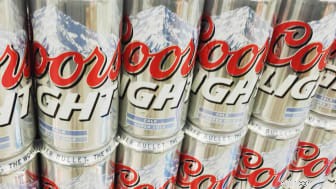
মনোলিথিক পাওয়ার সিস্টেমের মুনাফা স্থিরভাবে কিন্তু জোরপূর্বক গত পাঁচ বছরে প্রায় 36% বার্ষিকভাবে প্রসারিত হচ্ছে, যা এর কম্পিউটার, স্বয়ংচালিত, শিল্প এবং যোগাযোগ ব্যবসায়িক লাইনে চাহিদা বৃদ্ধির কারণে। কোম্পানিটি ক্লাউড কম্পিউটিং, স্বয়ংচালিত এবং টেলিকম বাজারে বাজারের অংশীদারিত্ব বৃদ্ধি করার পরিকল্পনা করেছে। এই বছরের সেপ্টেম্বর ত্রৈমাসিকে, বিক্রয় 8% বৃদ্ধি পেয়েছে এবং সামঞ্জস্যপূর্ণ EPS বেড়েছে 3%৷
MPWR একটি তুলনামূলকভাবে নতুন লভ্যাংশ প্রদানকারী, 2015 সালে অর্থপ্রদান শুরু করেছে। এর লভ্যাংশের বৃদ্ধিও নতুন - প্রথম কয়েক বছরের জন্য ত্রৈমাসিক প্রতি শেয়ার প্রতি 20 সেন্টে বিতরণ আটকে ছিল, কিন্তু 2018 সালে শেয়ার প্রতি 30 সেন্টে লাফিয়ে উঠে, তারপর আরও 33 % গত বছর, 40 সেন্ট।

নেতৃস্থানীয় উত্তর আমেরিকান ব্রিউয়ারমোলসন কুর্স ব্রিউইং (TAP, $56.57) has been in a downward trend for roughly three years and lost more than 40% of its value in the process. That slump continued in October, after the company reported September-quarter revenue and earnings misses. The weak results were mainly due to volume declines, which the company hopes to offset with increased efficiencies and stepped-up investing in its better-performing brands.
Molson Coors plans to invest more in premium brands such as Blue Moon, Belgian Moon in Canada and Peroni, and expand into new beverage categories such as ciders, wine spritzers and cannabis-infused beverages. The company took one step in that direction in November, announcing a partnership with L.A. Libations, which specializes in emerging non-alcoholic beverages.
At the same time, the company plans to save $600 million over the next three years by consolidating its four business units into two.
To spark some interest in its lackluster shares, Molson Coors announced its first dividend increase in years – a 39% hike to 57 cents per share. The company expects 2020 to be a transition year marked by flat to low-single-digit growth, but the new higher dividend doesn't appear in danger given a moderate 53% payout ratio.

PBIP recently reported its second straight year of record financial performance, with assets up 19% year-over-year for the fiscal year ended Sept. 30, 2019, and earnings per share surging by 40%. Some of that growth has come on the back of acquisitions; the 2017 purchase of rival Polonia Bancorp added $285 million (more than 50%) to the bank's asset base.
Management attributed strong 2019 results to big gains in interest-earning assets and good expense management, but warned of margin compression due to interest-rate issues.
Prudential Bancorp's dividend has improved a few times over the past few years, but it's not a serial raiser. Nonetheless, investors celebrated a 40% hike in the payout, announced in December, to 7 cents per share. The bank also has issued special dividends in three of the past four years, including 2019. Its 45-cent one-time distribution was thrice the 15 cents it paid in 2018.

Best known for its made-to-order burgers, Wendy's (WEN, $21.69) operates more than 6,700 company-owned and franchised fast-food restaurants worldwide and is the world's third largest quick-service restaurant chain.
During the September quarter, Wendy's opened 40 new restaurants, bringing the total number of new restaurants opened in 2019 to 111. System-wide sales improved nearly 6% and adjusted EPS rose 12%.
A cornerstone of the company's growth strategy is its "1 More Visit, 1 More Dollar" initiative, which seeks to increase same-store sales by launching new menu items. Going forward, Wendy's is aiming for 4% to 5% annual system-wide sales growth, high-single-digit free cash flow growth and a dividend payout ratio of roughly 50%.
Wendy's has been enhancing the annual sum of its quarterly payout for 10 consecutive years, and it delivered two dividend increases in 2019. First, it announced an 18% upgrade in February, to 10 cents per share, then another 20% hike in October to 12 cents. That amounts to a 41% improvement across the year. That said, its payout ratio is now a hefty 80% of earnings. That doesn't mean Wendy's dividend won't improve in future years, but it does indicate the pace of dividend growth might be muted.

Despite retail's well-known woes over the past few years, Dillard's shares have at least been holding up, notching 24% gains over the past few years – nothing to scream about, but far better than the likes of JCPenney (JCP) and Sears Holdings (SHLDQ).
The company's September-quarter results were hardly encouraging, however. While retail margins improved and revenues and profits beat analyst estimates, comparable-store sales (stores open for at least 12 months) were flat and profits per share fell by nearly 19%.
Still, free cash flow over the trailing 12 months is 52% better than the year-ago period, reflecting the benefits of Dillard's improved inventory management.
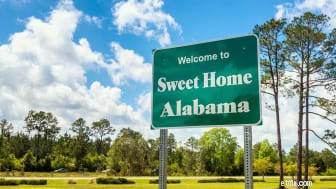
The acquisition of a competitor (The People's Bank) in 2018 added $155 million to First US Bancshares' earnings assets and gave it a presence in the fast-growing Knoxville market. The company has identified 18 cities across Alabama, Florida, Georgia, Mississippi, South Carolina and Tennessee as targets for branch expansion, and it recently opened new loan production offices in Mobile, Alabama and Chattanooga, Tennessee.
The bank's EPS shot 227% higher during the first nine months of 2019 as a result of earnings asset growth and merger-related efficiencies of scale. FUSB's earnings have been something of a roller coaster over the past few half-decade, but they're at least pointed in the right direction now.
First US Bancshares had been lifeless on the dividend front, stuck at 2 cents per share quarterly for years. That changed in late November 2019, when the company announced a 50% bump to 3 cents per share.

A network of 32,200 active coaches sold Medifast products during the September quarter; sales averaged $5,715 per coach – down 1% year-over-year. That said, sales exploded by 37% in the quarter, and EPS improved by 16%. Despite this strong quarter, the company significantly lowered its full-year outlook. It lowered its previous guidance, for $730 million to $750 million in sales and $6.75 to $6.95 in EPS, to $700 million to $710 million in sales and $5.80 to $5.90 in EPS.
The company expects future growth will come from new products, more coaches, a bigger U.S. footprint and Asia-Pacific expansion. Medifast recently began selling products in Hong Kong and Singapore.
Medifast has been churning out impressive dividend growth over the past few years:a 50% increase in 2017, 56% in 2018 and 51% in 2019, to its current payout of $1.13 per share. However, MED's payout ratio is now 77% of this year's expected profits, which means similar dividend growth will really only be possible on the back of significant earnings expansion. The good news there? Analysts are forecasting a 29% jump in the bottom line in 2020.

Financial advisory firm Goldman Sachs (GS, $249.46) was ranked tops in announced and completed mergers-and-acquisitions deals in 2019, according to Dealogic, as well as No. 1 in equity and equity-related offerings. The company derives 40% of revenues from trading, 25% from asset management, 21% from investment banking and 14% from consumer and wealth management.
The firm's revenues were flat in 2019, at $36.5 billion, but higher expenses and provision for credit losses weighed on EPS, which declined 17% year-over-year. Its quarterly profits have missed expectations twice in a row, too. That said, Goldman's fourth-quarter revenues were strong, with rebounds in asset management and trading driving a 23% jump in the top line.
Goldman Sachs purchased assets being sold at bargain prices by troubled rival Deutsche Bank (DB) in 2019, including an Asian portfolio of equity derivatives valued at $50 billion in September. These asset purchases are helping the bank expand market share.
Goldman's 56% payout bump in 2019 came across a pair of dividend increases:A more modest improvement, from 80 cents per share to 85 cents, announced in April, then a 47% burst to $1.25 announced in July. Even after that considerable hike, GS still pays out less than 20% of its profits as dividends.

The benefits of this shift were evidenced by the company's 96.4% revenue retention rate in the September quarter and 18% adjusted EPS gains. Operating cash flow surged by 134% during the first nine months of 2019 – a boon that enabled SS&C to pay down debt while continuing to make acquisitions.
That's good, because much of its growth – adjusted EPS have improved by 27% annually since its 2010 initial public offering – has come via M&A. The company closed more than $8 billion in purchase transactions in 2018 alone.
SS&C is handing more of that cash over to shareholders, too. The company boosted its quarterly dividend by 25% to start 2019, then announced another 25% hike in November, to 12.5 cents per share – a total 56% increase across the year. Like many of these dividend growth stocks, SSNC boasts a still-modest payout ratio of 28%.

Toronto-based Barrick Gold (GOLD, $17.95) is one of the world's largest gold producers. After merging with Randgold Resources last year, the company owns five of the industry's top 10 gold assets and two development-stage assets with the potential to become top 10 gold producers. Barrick's operations are expansive, across 15 countries, but most of its actual production comes from low-risk North American mines.
The company's preliminary full-year and fourth-quarter results indicate that Barrick has hit its full-year guidance targets for production. Barrick's preliminary figure for gold production was 5.5 million ounces, versus an expected range of 5.1 million to 5.6 million ounces. Preliminary copper production of 432 million pounds, if it holds, would exceed guidance of 375 million to 430 million pounds.
The company is shedding some of the assets it acquired with Randgold. Barrick and its Senegalese joint venture partner recently agreed to sell their 90% stake in a Senegal gold mine, for up to $430 million. This follows the sale of its 50% stake in the Kalgoorlie Super Pit, one of Australia's largest gold mines, for $750 million a month earlier. Barrick Gold was targeting $1.5 billion of assets sales in 2019 and plans to use some of the proceeds to expand its footprint in copper mining. Demand for copper is rising due to the use of this metal in low-carbon technologies.
Barrick Gold closed out 2018 by issuing an "enhanced" 7-cent-per-share dividend in connection with the Randgold merger (it had paid 3 cents quarterly since the start of 2017). However, its regular payout improved to 4 cents per share starting in 2019, then again to 5 cents later in the year. That represents a 67% improvement from its regular dole from 2018.

Results have been choppy over the past few years, but generally pointed in the right direction. Revenues have grown roughly 11% per year through the end of 2018; profits have dropped from $1.59 per share to $1.24 per share in that same time frame, but analysts are expecting a $3.10 profit for full-year 2019.
New product launches helped Universal Display deliver 71% sales growth and 184% EPS gains during the first nine months of 2019.
Universal Display is a perfect example of the massive dividend increases that often come shortly after a company initiates payouts. The company began distributing a 3-cent-per-share dividend in 2017, doubled it in 2018, then hiked the payment another 67% in 2019 to a dime per share. Low 13% payout, the company's minimal debt and big cash reserves provide a wide margin for dividend safety.

The company's solid share of a growing uniform market has fueled roughly 5% annual revenue and EPS gains over the past half-decade, and results that have exceeded analyst estimates in nine of the past 10 quarters.
Unifirst's EPS rose by almost 14% in the fiscal year ended Aug. 31, 2019, on 7% sales growth. The company is guiding for at least 3% sales growth in fiscal 2020, but lower EPS mostly due to the fiscal year being one week shorter than 2019.
Unifirst has ramped up its dividend like a company possessed over the past few years. It announced a tripling of its dividend in 2018, to 11.25 cents per share, then followed that up with a 122% hike announced in October 2019, to 25 cents per share. The outlook for more dividend growth is supported by modest 12% payout, low debt of $45.6 million and cash totaling $356 million.

Through the first nine months of 2019, the company had acquired 30 properties across nine states and entered into leasing agreements with 12 new operators. Purchase costs for these properties totaled $106.9 million. To raise capital for more property acquisitions, Innovative Industrial Properties recently issued $134.1 million of exchangeable senior notes and completed a $162.8 million share offering.
Diluting shares like that has consequences – the secondary offering triggered an 18% decline in IIPR's shares in July, and the stock lost more than half its value between then and late October. Still, Innovative Industrial Properties has been explosive by any standard, but especially compared to other REITs. Its stock has delivered a total return (price plus dividends) of 379% over the past three years, versus just 29% for the Vanguard Real Estate ETF (VNQ).
The REIT continues to grow by leaps and bounds, announcing 171% revenue growth during the first nine months of 2019. Adjusted funds from operations (FFO, a measure of profitability for real estate companies) blossomed by 117% on a per-share basis. That has helped shares rebound somewhat off its October lows.
IIPR's biggest fireworks in 2019, however, came courtesy of its rapidly climbing payout. The REIT delivered four dividend increases across the year, climbing from 2018's 35 cents per share to $1 per share by 2019's end – a total improvement of 186%.
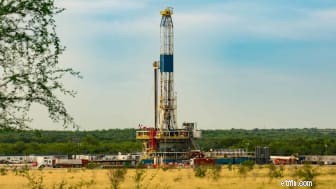
Boosted semiannual from 16 cents to 32 cents, then boosted to a quarterly 44 cents. Ends up being 450%.
The company had doled out a 4-cent-per-share semiannual dividend for years since 2009, when it was forced to cut its payout amid the Great Recession. But that changed in 2018, as PXD quadrupled its dividend, to 16 cents per share.
Pioneer then doubled that dole in March 2019, to 32 cents per share, and followed that up by not just raising its regular payout to 44 cents in September, but switching its payout plan from semiannually to quarterly. That projects out to $1.76 per share every year, up from 32 cents last year – a whopping 450% improvement.
As for the company itself:It became a pure play in the Permian Basin last year by selling its Eagle Ford shale assets. It sold its remaining Eagle Ford assets in May of last year, for about $475 million, leaving it with roughly 680,000 net acres in the Midland Basin.
Pioneer has taken advantage of its improved capital efficiency, $100 million of restructuring-related cost savings, and robust cash to boost shareholder returns through share repurchases and dividend growth. In addition to its generous dividend hikes, the company repurchased $728 million shares during the first nine months of 2019 as part of its $2 billion repurchase plan.